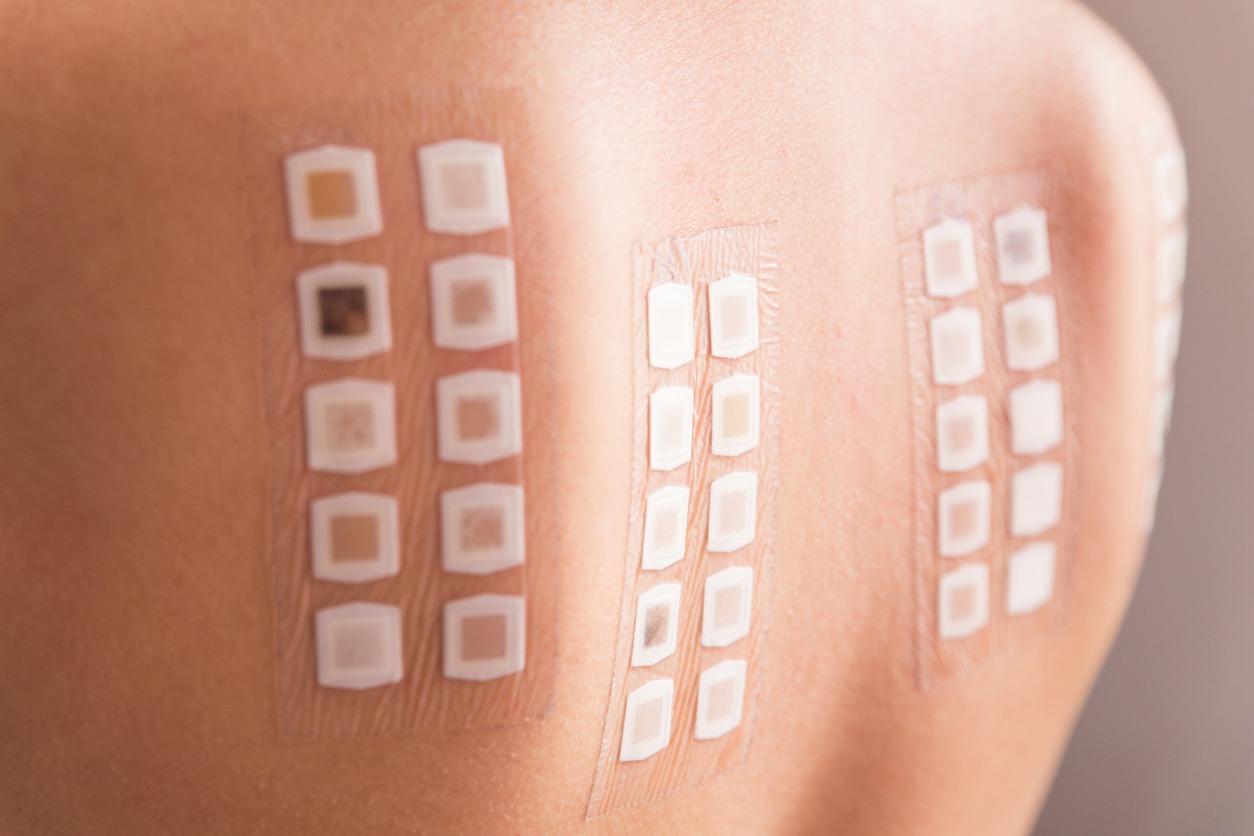If you have sensitive skin then a switch to a new product is… A gamble, to say the least. Be envious of all those YouTube stars that can try a new cosmetic every week and have nothing happen to them, but definitely don’t try to emulate that. It will end badly.
The general rule of thumb for switching cosmetics with sensitive skin is don’t. If something doesn’t irritate your skin, then you have found a winner. However, that leaves a dramatic lack of flexibility, doesn’t it? That being said, you probably don’t want to make the jump at random and have horrible redness consume a portion of your face. So how do you do it? If you want to try new makeup, you do a patch test.
What is a Patch Test?
Patch testing is a lot like what it sounds like it is. It is a controlled way of testing new cosmetics to make sure they won’t do anything horrible to your skin. If you have a history of sensitive skin or even allergies, this should be the first thing you should do with a new product. This is even true if a product markets themselves as free of everything irritating under the sun. If you have skin with allergies or sensitivities, you can never truly know what will trigger your irritation.
Where to Perform a Patch Test with Cosmetics?
Obviously, you don’t want to patch test on your face when it comes to cosmetics. You don’t want a big red splotch on there any more than you want a patch of makeup that doesn’t match the rest. However, when performing a patch test, you do want to apply the makeup in an area with skin that is as delicate and easily irritated as the skin on your face.
For example, the skin on the top of your forearm is a little thicker naturally and from exposure to the sun so it has a bit more protection. However, if you apply the cosmetic to the more delicate underside of the wrist area, you will get faster results. It is an extra bonus that the area is pretty easy to hide if need be.
Other areas you can consider patch testing for more accurate results is under the jawline or the neck just below your ear. If you are using eye makeup, like eyeliner in particular, you should consider applying it to your eyes light on a weekend you are not going out. The area around your eyes is one of the most sensitive spots on your body, so often that is the only area to get an accurate read for eye cosmetics.
How Long to Leave a Patch Test On?
After you have found a suitable area, you will want to apply and remove the cosmetics as you would wear them for 48 hours. This will give you the most accurate statement on whether they irritate your skin. Some directions may tell you to leave the cosmetic on for a full day, but any cosmetic can irritate when left on your skin for a full day without any time to breathe.
Whichever way you choose to do it is technically fine. However, even if the testing period is not close to done, if you have any swelling, burning, redness, or discomfort in any fashion, you should remove it.
What Happens If I Have A Reaction?
The science term for any reaction you have to cosmetics is allergic contact dermatitis. If you have any reaction to a cosmetic then that means you have that, and you should definitely not use that product again. Typically you should only have a minor reaction which will hopefully clear up on its own in a day or two. However, if you have a just slightly more dramatic reaction, like trouble breathing or hives all over your body, you should seek medical attention immediately.
Ideally, you will want to identify the ingredient in the cosmetic that made you have a reaction. However, that is not always so easy to do and it is not always just the one ingredient. However, you should keep a copy of the cosmetic label of everything that causes you a reaction, and eventually, you will find some similarities.

